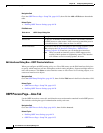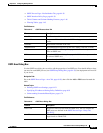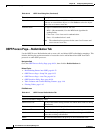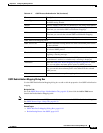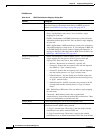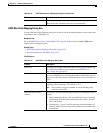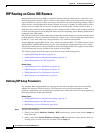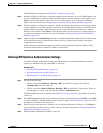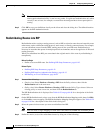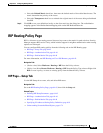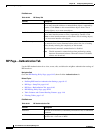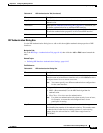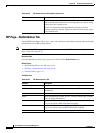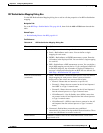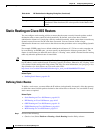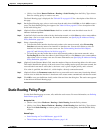
64-44
User Guide for Cisco Security Manager 4.4
OL-28826-01
Chapter 64 Configuring Routing Policies
RIP Routing on Cisco IOS Routers
Note We do not recommend that you use clear text authentication in RIP packets, because the
unencrypted authentication key is sent in every packet. Use plain text authentication only when
security is not an issue, for example, to ensure that misconfigured hosts do not participate in
routing.
Step 5 Click OK to save your definitions locally on the client and close the dialog box. The defined interface
appears on the RIP Authentication tab.
Redistributing Routes into RIP
Redistribution refers to using a routing protocol, such as RIP, to advertise routes that are learned by some
other means, such as a different routing protocol, static routes, or directly connected routes. For example,
you can redistribute routes from the OSPF routing protocol into your RIP route. Redistribution is
necessary in networks that operate in multiple-protocol environments and can be applied to all IP-based
routing protocols.
When you redistribute into RIP, you can maintain the original metric of the route by redistributing it
transparently.
Before You Begin
• Define at least one RIP route. See Defining RIP Setup Parameters, page 64-42.
Related Topics
• Defining RIP Setup Parameters, page 64-42
• Defining RIP Interface Authentication Settings, page 64-43
• RIP Routing on Cisco IOS Routers, page 64-42
Step 1 Do one of the following:
• (Device view) Select Platform > Routing > RIP from the Policy selector, then click the
Redistribution tab in the work area.
• (Policy view) Select Router Platform > Routing > RIP from the Policy Type selector. Select an
existing policy or create a new one, and then click the Redistribution tab.
The RIP Redistribution tab is displayed. See Table 64-23 on page 64-48 for a description of the fields
on this tab.
Step 2 On the RIP Redistribution tab, select a row from the RIP Redistribution Mappings table, then click Edit,
or click Add to create a mapping. The RIP Redistribution Mapping dialog box appears. See Table 64-24
on page 64-49 for a description of the fields in this dialog box.
Step 3 Select the protocol whose routes you want to redistribute into RIP.
Note You can create a single mapping for each static route, BGP AS, EIGRP AS, and OSPF process.
Step 4 Define the metric (cost) of the redistributed routes by doing one of the following:



